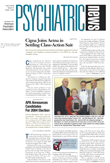An estimated 41 million Americans lack health insurance, while many of those with coverage face escalating premiums and copayments and decreasing benefits.
Those recent signs of crisis within the health care system have led to the revival of an idea that has been implemented by most developed nations, but frequently dismissed in the United States as politically unfeasible.
More than 7,000 physicians have signed on to a proposal for a single-payer national health insurance (NHI) program, which would be an “expanded and improved” version of Medicare.
The proposal, which is outlined in the August 13 Journal of the American Medical Association, is supported by former U.S. Surgeon Generals David Satcher, M.D., and Julius Richmond, M.D., and by Marcia Angell, M.D., former editor of the New England Journal of Medicine.
Angell said, “In the current economic climate, we can no longer afford to waste the vast resources we do on the administrative costs, executive salaries, and profiteering of the private insurance system.”
She and other authors of the JAMA article target costs related to private insurance companies and health maintenance organizations (HMOs) as the source of savings that could be used to increase access to health care.
Private health insurers and HMOs consume 12 percent of premiums for overhead, according to the article, while both the Medicare program and Canada’s single payer health system have overhead costs below 3.2 percent (see
page 25).
The authors said, “Our multiplicity of insurers forces U.S. hospitals to spend more than twice as much as Canadian hospitals on billing and administration; forces U.S. physicians to spend vast amounts on billing; and nourishes a panoply of business consultants, coding software vendors, and other satellite businesses.”
The authors observed, “In this market-driven system, insurers and providers compete not so much by increasing quality or lowering costs, but by avoiding unprofitable patients and shifting costs back to patients or to other payers.”
According to the single-payer proposal, patients could choose to go to any doctor and hospital. Most hospitals and clinics would remain privately owned and operated, receiving a budget from the NHI program to cover operating costs. Physicians could continue to practice on a fee-for-service basis or receive salaries from group practices, hospitals, or clinics.
Investor-owned HMOs and group practices would be converted to not-for-profit status. Only institutions that actually deliver care could receive NHI payments.
APA has not taken a position on single-payer legislation. An action paper approved by APA’s Assembly at its May meeting, however, requested that the Association adopt a policy encouraging the federal government to oversee the establishment and funding of universal health care access, which would “improve efficiency while maintaining quality.” The Joint Reference Committee referred the item to the Council on Advocacy and Public Policy and the Committee on Government Relations with a request that their comments be submitted to the Board of Trustees at its meeting later this month
As reported on the Web site www.kaisernetwork.org (August 13,15, 20), editorial reaction acknowledged the seriousness of the problems in the health care system, but was not unified about the feasibility of the single-payer approach.
A Seattle Post-Intelligencer editorial argued, “It’s an excellent measure of the depth of the American health care crisis that a group of doctors has proposed a national health plan.” The Arizona Daily Star editorial claimed, “[Given the] abysmal status of the health delivery system in the United States, [the proposal] is a shot in the arm for a national health care system.”
Investor’s Business Daily said proponents of the proposal would “rather provide third-rate health care for all by making us all pay higher taxes than let Americans take care of their own problems as individuals making choices.” The Raleigh News & Observor called the proposal a “good start. [Its] basic principles are sound.”
Donald Palmisano, M.D., president of the AMA, said in a written statement of opposition, “Long waits for health care services, a slowness to adopt new technologies and maintain facilities, and development of a large bureaucracy that can cause a decline in the authority of patients and their physicians over clinical decision making are all hallmarks of a single-payer system.”
The American Association of Health Plans, in a written statement, maintained that the proposal would be “dead on arrival” in Congress.
Information about the proposal and reaction to it is posted at the Physicians for a National Health Program Web site at www.pnhp.org. ▪
